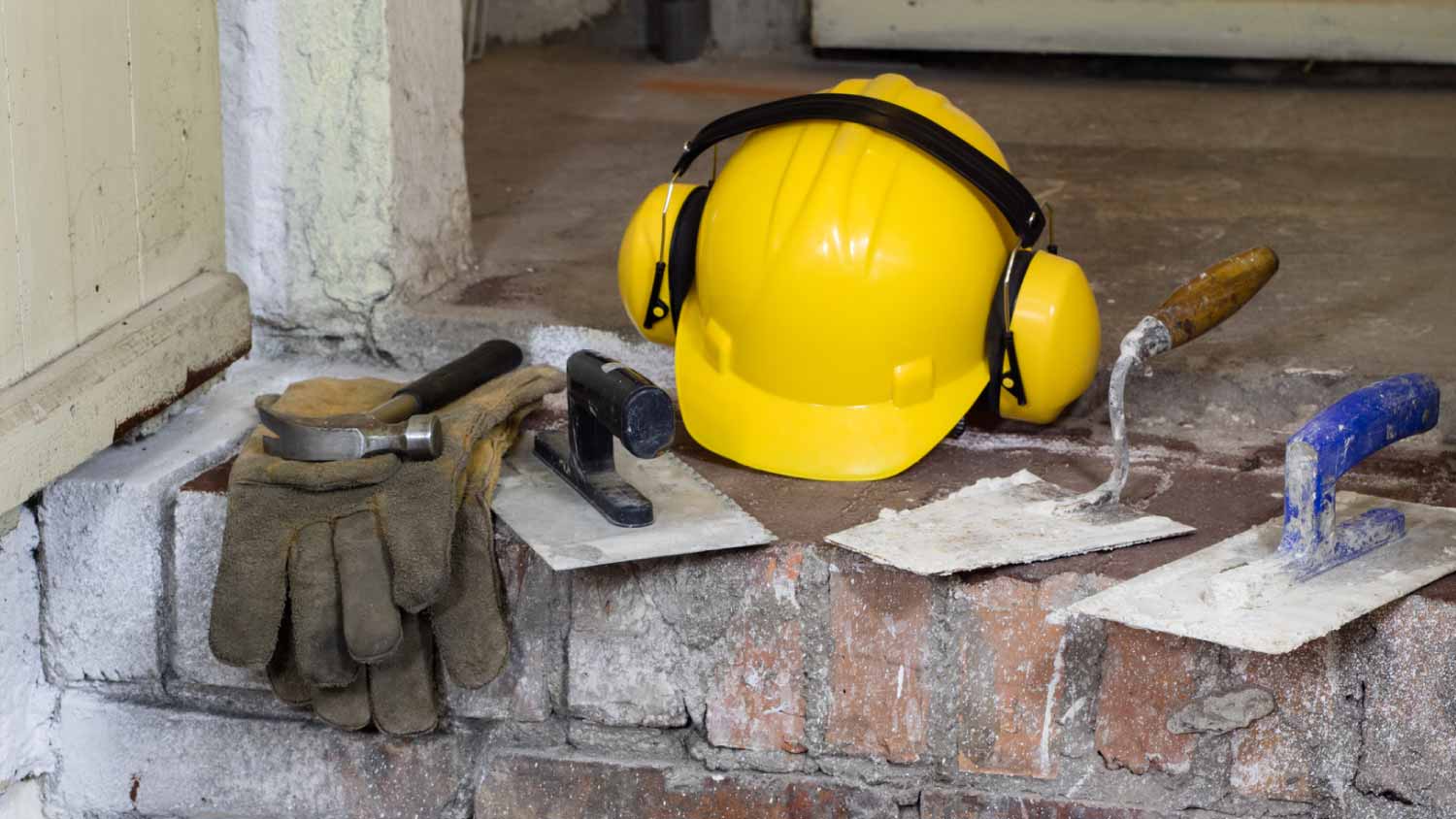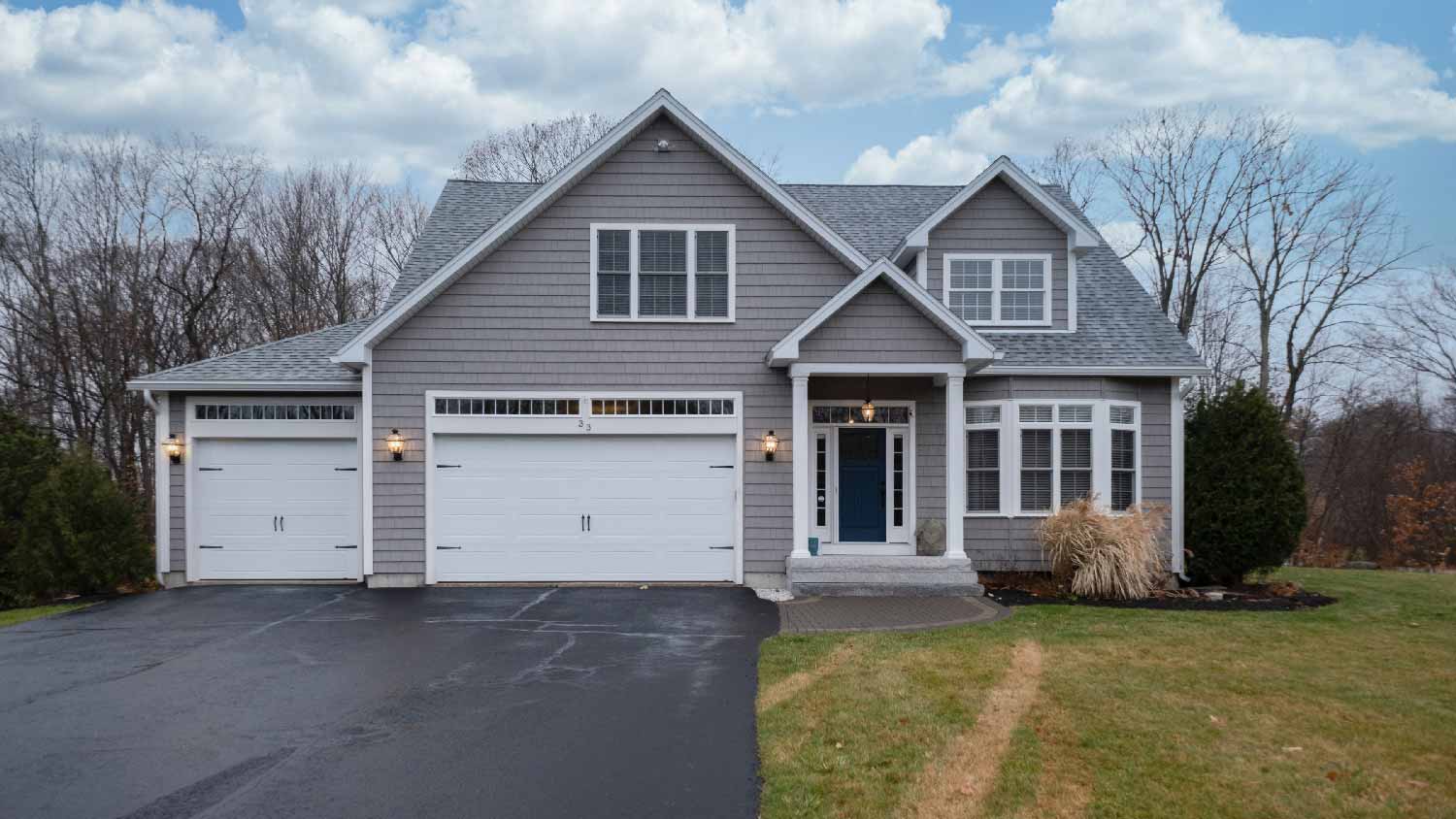
Fiber cement siding is durable, fire-resistant, and affordable. Learn more about fiber cement installation costs in Columbus, OH.
Rock your world (and your house) with new stone veneers


There are lots of great ways to beautify your home, and learning how to install stone veneer is one of them. It’s easier on the wallet and is arguably just as impressive as the real thing. From adding veneers to your entire home exterior, outdoor fencing, fireplaces, and bathrooms, the potential is endless. So roll up your sleeves and level up your masonry skills by following these seven steps.

You’re ready to take on your stone veneer project, but before you get started, here are the things you need to do to prepare.
First things first: check the building codes in your area to see what the requirements are for your materials and installation process. Get all necessary permits, if applicable.
Once you’ve gotten the business part squared away, then you can move on to the fun part of figuring out what kind of stone veneer you want to use. Manufactured stone costs $5 to $8 per square foot for materials only, and faux stone costs $6 to $9 per square foot. The type of stone you choose will have the largest effect on your stone veneer installation costs.
Finally, you can calculate how much material you need to buy for your new stone veneer wall. Figure out the square footage by multiplying the height and length of your wall. Next, subtract the square footage of any windows or doors. Take that final number and add 10% to 15%. You’ll want the extra cushion to account for any mistakes or for the trimming you’ll do during the installation.
Install two layers of grade D moisture barrier, overlapping 6 inches at your vertical seams and 4 inches at your horizontal seams. Overlap 16 inches around the corners.
Once that’s done, install your galvanized metal lath. Secure it into place with galvanized nails or staples on the studs. Just like with the moisture barrier, overlap the lath 16 inches around the corners.
Note that you don’t need to install a moisture barrier and metal lath if you’re installing your stone veneer onto clean and unpainted masonry or concrete surfaces. This includes stucco.
However, if you’re installing your stone veneer on plywood, wall sheathing, metal siding, sheetrock, or fiber cement board, you need to do this step.

Get your stone veneer mortar and prepare it for use. This might include mixing it by hand, or by machine. You’ll know your mortar is the right consistency if it clings to your trowel when you hold it sideways.
Grab your protective eyewear and then use a square, notched trowel to apply ½ inch to ¾ inch of mortar. Next, take a metal rake and make horizontal lines. After you complete the scratching process, wait 24 hours for the mortar to properly set before moving on to the next steps.

While you wait for your scratch coat to dry, you can prepare your stones for installation. If you notice that your stones are dirty, this is a good time to clean them off with water and let them dry completely.
Also, you should plan your installation ahead of time by laying out your stones on the ground and deciding which piece should go where. For the most natural look, mix up the shapes and colors of the stones by placing big ones next to small ones and thick ones next to thin ones.
During this step, you may notice that you need to trim some of your stone pieces. You can do this on a skill saw with a dry or wet diamond or masonry blade. For smaller pieces, you can use a mason’s hammer.

After the scratch coat is dried and ready, you can get started on installing the stones. You should start at the corners and then work your way up from the bottom. The lowest stone layer should be 3 inches above the ground.
First, take a sponge or brush and apply some water to the side of the stone. Then, apply a half-inch to a 1-inch layer of mortar to the back of the stone. Take the stone and press it into the wall.
When you push the stone into the scratch coat, move it to the right and left a little and apply firm pressure.
Repeat these steps for each stone piece. Take care to space the stones evenly from one another for a clean, finished look.

Depending on your vision, you may want to color the grout. If you decide to do this, you can mix in liquid cement color into the grout.
For the grout, you can use veneer stone mortar. Put it in a grout bag and start filling in the joints. Fill in the gaps with about a ½-inch layer.
Allow the grout to dry until it’s thumbprint hard. This means that if you press your thumb onto the mortar, that it leaves a thumbprint. Then, use a joining tool to get rid of any excess mortar. Use the tool to also smooth out the grout.
If your stone veneer wall is outside, make sure to install kick-out flashing by your gutters to ensure proper drainage. Failing to do so can cause moisture to seep into the walls which will later cause rot and other water damage.
Clean the stones with a soft-bristled brush. Then, apply sealant for the stone if necessary. It’s a good idea to seal stone veneers anywhere that you expect moisture. That means that any outdoor walls, pool areas, showers, and bathrooms require sealing.
Installing a stone veneer is certainly a project that handy DIYers can tackle, but it’s not as easy as it may seem. Besides the technical finesse, you’ll need a bit of a designer’s eye in order to figure out the best layout for your stones. If you think you have what it takes, then you can cut down quite a bit on stone siding costs because you can just pay for the materials.
Mistakes during installation can cause lots of headaches and hits to your wallet later. Particularly, it’s important to know how to install stone veneer on exterior walls. If the installation is done incorrectly, you can have moisture issues that can cause extensive damage.
Failing to install kick-out flashings, not installing joints properly, or even failing to properly install the moisture barrier and metal lath are all issues that a novice masonry DIYer may make.
Avoid any issues and hire a stone veneer company near you to get the job done right the first time. They can help you choose the best type of stone for your home and budget, and you won’t have to break a sweat.
From average costs to expert advice, get all the answers you need to get your job done.

Fiber cement siding is durable, fire-resistant, and affordable. Learn more about fiber cement installation costs in Columbus, OH.

In addition to protecting against extreme Midwest temperatures, new siding in Columbus adds curb appeal. Learn about siding replacement cost in Columbus.

New vinyl siding adds value and curb appeal to homes in Columbus, Ohio. Learn about average vinyl siding installation costs in Columbus, Ohio.

Damaged siding doesn’t always mean you need a full replacement. Learn when you can do a partial siding replacement and some problems that may arise.

Power washers can effectively clean dirt and grime on siding, but there’s a risk of damage. So, can a power wash break siding? Find out more.

Picking between Hardie board and traditional cement board siding? Our comparison guide will help you decide.